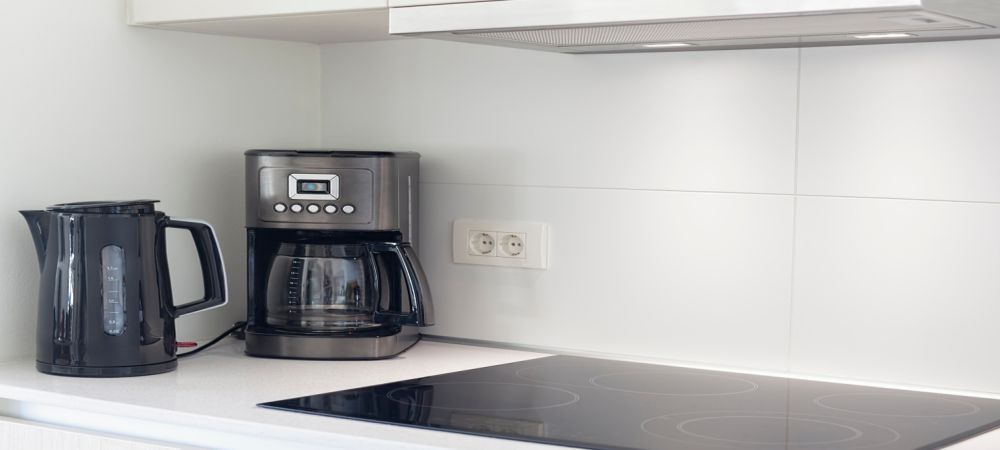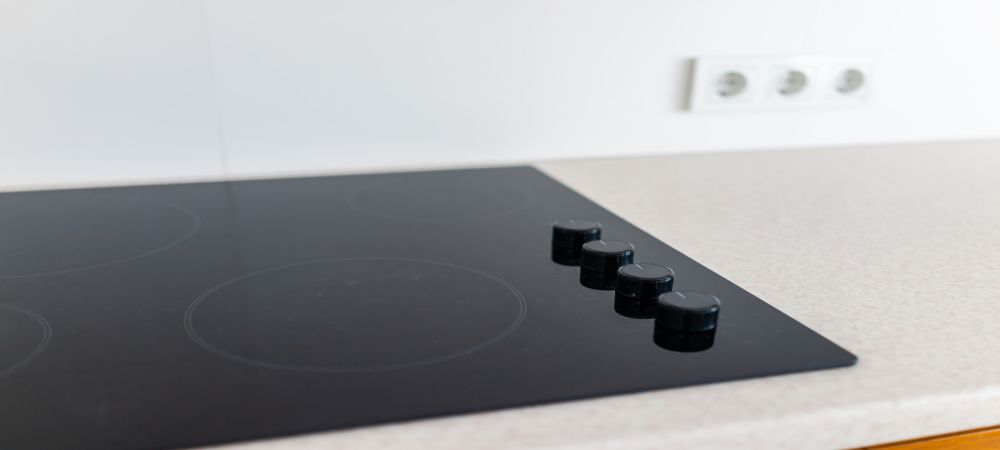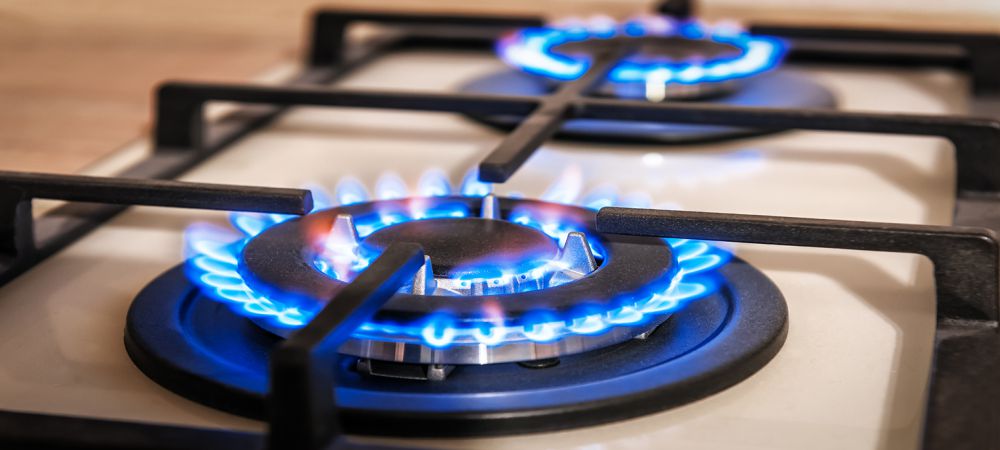Is it time to get rid of the old cooktop? Perhaps you are moving into a new house and need to buy one? There are plenty of choices – brands and individual models. As you sift through the product catalogues, you end up getting more confused. One way to arrive at a decision – the right one – is to take a moment to know the different types of stovetops – of which there are only three main ones. Only then will you have an easier time choosing a specific unit that is best for you. Here is the complete guide by top appliance repair service:
Types of Stovetops
Should you prioritize gas cooktops over the others? Are induction or electric cooktops better for you? Which one should you eventually buy for your kitchen?
Read on the find out more about the distinct features of each type.
Electric Cooktops
An electric cooktop, as its name implies, generates heat without using gas and flame. Essentially, there are two types of electric cooktops:
Conventional or Traditional Coil. Coil cooktops have the heating element sitting on top in a recessed cavity, which also functions as a catch basin for oil and food debris. One reason for its popularity is its attractive pricing.
Smooth Top. Think of this type of cooktop as an upgrade over electric coil cooktops. Instead of being exposed, a glass surface hides radiant elements underneath. Not only are smoothtop cooktops easy to clean, but they also able to provide evenly distributed heat – and quickly, too. Furthermore, they are visually attractive with modern, sleek designs.
Cooking your food is supposed to be fun, and an electric cooktop should make that possible. Besides choosing between conventional or smooth top, there are plenty of other features that expand your cooking options – elements being one.
Dual Elements. The heating elements have an inner ring that allows you to use small cookware. The outer ring, on the other hand, lets you use large cookware.
Bridge Elements. By placing a bridge element between two elements, the cooking surface of the cooktop can accommodate long cookware such as a griddle.
An electric cooktop is usually cheaper than a gas cooktop. Price aside, it is also easier to clean and maintain. For conventional burners, it may require a bit of effort to wipe down the coils. A smooth top, on the other hand, is practically effortless as the glass surface is easily wiped with a damp cloth. If needed, you can use a soap or baking soda mixture to break down the accumulated grease and cooking oil. You do need to be careful so as not to scratch or accidentally break the surface.
A prevailing perception among consumers is that the cheaper cost of electric cooktops is only a temporary benefit. In July 2019, Frontier Energy published Residential Cooktop Performance and Energy Comparison Study. A coil cooktop (Frigidaire) has an energy efficiency rating of 79.3%, while a ceramic cooktop (Whirlpool) lags a little behind at 75.5%. A gas burner (Samsung), meanwhile, sits far behind at 31.9%. High energy efficiency ratings help lower the impact of the higher cost of electricity – but yes, you still end up paying more over the long term.
Electric cooktops do take more time to heat up. Once heated, the heating elements retain more heat, which means even if the burner is already turned off, food continues to cook. On the flip side, it takes a longer time to cool down.
The longer time it takes to heat up and cool down results in diminished temperature control. In other words, you cannot abruptly increase or decrease heat – a feature that may not matter to you but certainly does to professional chefs. By the way, this perceived disadvantage can also be an advantage. Less radiant heat also means the kitchen does not heat up as much as if you were using a gas cooktop.
The selector knob on an electric cooktop does not tell you much, except low, medium, and high settings – usually. Because the heating elements do not produce flame, determining the precise temperature of the hot surface can prove to be challenging. In this case, you might consider buying a digital infrared thermometer.
Related Article: Electric Stove Not Heating: Causes and How To Fix
Gas Cooktops
For better allover performance, gas cooktops rule. For one, you have much greater control over the temperature. Moreover, this type of cooktop can produce high heat in the least amount of time, compared to electric and induction cooktops.
Natural gas is cheaper, especially over the long run, compared to relying on electricity. Moreover, you do not have to deal with the hassle of not being able to cook when there is an electrical outage. Even if the igniter does not work, you can still use a lighter or match to ignite the gas.
Gas cooktops produce heat immediately once ignited. You can turn the knob to a high setting to reach hot temperatures quickly. By observing the gas flame, you can estimate the heat and make small adjustments to increase or decrease. In these regards, you could say gas cooktops are superior to electric and induction cooktops. On the other side of the coin, it does not necessarily heat food faster due to a lower energy efficiency rating. Furthermore, it does produce plenty of radiant heat which will warm the kitchen.
Cleaning glass cooktops entail a little more work as reaching grooves and crevices around the gas burners can be troublesome. Unfortunately, you do have to remove trapped grease, oil, and food debris. You can, of course, choose models with sealed gas burners. This type of gas cooktop makes cleaning so much easier.
Like all other types of cooktops, there are extra or premium features that should fit your cooking habits. One is having continuous grates. It is a handy addition that lets you slide large, heavy pots and pans effortlessly. Another is eliminating the need for a range hood by choosing a model with a downdraft design. It serves the same purpose of drawing smoke and odour out of the kitchen.
Natural gas, and any gas for that matter, is highly flammable. An open flame, for instance, can be extremely dangerous. For that reason, one feature that you should think about seriously is a gas cooktop equipped with flame failure safety. Such an addition enhances the functionality by re-igniting the flame if it goes off. More importantly, it shuts off the gas burner if there is a gas leak.
Induction Cooktops
Induction cooktops are similar to electric cooktops in the sense that they both rely on electricity to produce heat through heating coils. However, they differ in the manner by which heat is generated. Simply put, an induction cooktop heats the coils by way of electromagnetic radiation.
All induction cooktops hide their electromagnetic coils underneath a ceramic glass surface, which makes them also easy to clean. On functionality and efficiency, it distinguishes itself from other types of cooktops.
Compared to gas and electric cooktops, an electric induction cooktop does not waste heat. That is because the heating coils transfer heat directly to metal cookware. As a result, you can cook food while the ceramic glass surface does not feel hot at all. Less radiant heat also means a cooler kitchen. Having such a high energy efficiency rating makes it more cost-effective than conventional electric heating elements.
Induction cooktops and ranges offer a great deal of flexibility when it comes to temperature control. Most offer a way for you to set the desired wattage, for example, which negates one of the disadvantages of electric cooktops.
In a busy household, induction cooktops are generally safer than gas and electric cooktops. It is devoid of a hot cooking surface, which means a lower risk of burn injuries – especially for a family with young home chefs.
If there is one costly caveat to buying an induction cooktop, that is the cost of cookware. Unless yours are designed to work either for both gas and induction cooktops, you will need to buy conductive pots and pans.
For the induction cooktop to work, it needs to come into contact with iron, and only heats that spot. Any other type of cookware – aluminum, glass, or copper is not going to work. Furthermore, the bottom needs to be flat to sit properly on the surface.
Related Article: How To Repair an Oven Not Heating Up
Which of All Types of Cooktops Is Best for You?
Among kitchen appliances, the different types of cooktops present a conundrum. It is much more than a centrepiece as you use it to cook food for the family. Hence, before deciding on buying one, you should think about the cost, practicality, functionality, and features.
At the end of the day, you can cook your food using the different types of cooktops. You do need to ask these questions to determine which one can best suit your needs.
Choose gas cooktops if you are agreeable to the following:
- Do you have an existing gas main, or need to spend more money on having a professional come and do the installation?
- Do you have a busy schedule and need to cook in a rush?
- Are you okay with the cost of gas?
Choose between electric and induction cooktops if you place more value on the following:
- Do you have the type of cookware that works for electric cooktops?
- Are you willing to spend more money on buying conductive cookware if you do not have them?
- Do you prefer easy to clean kitchen appliances?
- Besides the cost of buying a unit, are you okay with the cost of electricity?
Consider the family dynamics, the theme or style of your home and kitchen. Which one do you think is more cost-effective? Is one more practical than the others? On functionality, you can probably work with all types of cooktops. Features, all brand manufacturers have different models to choose from – each offering more features as the prices go up.
Have you arrived or how did you arrive at a decision? Please leave comments to let us know. Call Prime Appliance Repairs today!







